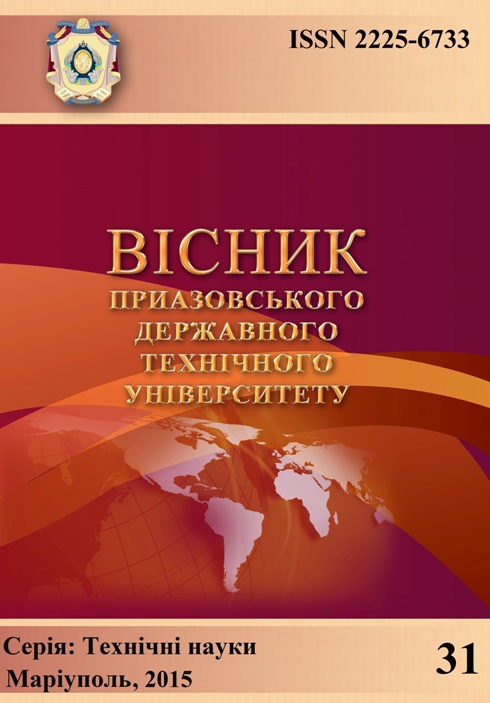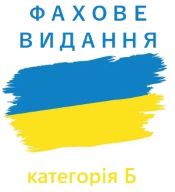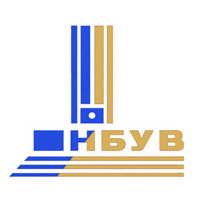Calculation and analysis of the cutting temperature at grinding
DOI:
https://doi.org/10.31498/2225-6733.31.2015.71443Keywords:
grinding, grinding disk, removable allowance, adiabatic rod, cutting temperature, the heat source, conventional cutting stress, grinding schemeAbstract
The work deals with the definition of conditions for rational use of the grinding process at the finishing operations, the thermal stress reduction due to the establishment of optimal grinding conditions and characteristics of the abrasive disk, the application of new kinematic grinding schemes and elimination of intense friction of the disk bond with the material being processed which is the main source of temperature defects on the surface being processed. A mathematical model for determining the temperature of cutting at grinding with due regard to temperature change laws in the allowance layer being removed for definite depth of heat penetration into the surface of the workpiece has been developed. A problem in cutting infinitely thin adiabatic rods (thought of as the allowance to be removed) with an abrasive disk, a new analytical dependence for determining the cutting temperature with regard to contact time of the abrasive disk with the adiabatic rod was obtained. It has been shown that a 10 times decrease in conventional cutting stress resulted in proportional maximum cutting in temperature reduction during grinding, it corresponding to the practical data. Knowing the cutting temperature change dependence on adiabatic rod heating time, cutting temperature for any grinding scheme can be determined, the contact time of the grinding wheel with the adiabatic rod can be set as well as the speed of the heat source movement speed along the adiabatic rod. Examples of cutting temperature calculation for the specific conditions of grinding have been given. It was found that in the course of time the temperature of cutting at grinding increases continuously, approaching the value of the energy balance, that is equal to the ratio of the conventional cutting stress to the specific heat multiplied by the density of the material being processed. The terms of the cutting temperature reduction at grinding have been laid out and practical recommendations have been madeReferences
Резников А.Н. Теплофизика процессов механической обработки материалов / А.Н. Резников. – М. : Машиностроение, 1981. – 279 с.
Якимов А.В. Оптимизация процесса шлифования / А.В. Якимов. – М. : Машиностроение, 1975. – 175 с.
Силин С.С. Метод подобия при резании материалов / С.С. Силин. – М. : Машиностроение, 1979. – 152 с.
Новиков Ф.В. Повышение эффективности технологии финишной обработки деталей пар трения поршневых насосов / Ф.В. Новиков, С.М. Яценко // Физические и компьютерные технологии : международная научно-техническая конференция (19-20 апреля 2007г.). − Харьков : ХНПК «ФЭД», 2007. − С. 8-20.
Механика резания материалов. – Одесса : ОНПУ, 2002. – 580 с. – (Физико-математическая теория процессов обработки материалов и технологии машиностроения / Под общ. ред. Ф.В. Новикова и А.В. Якимова : в 10-ти т.; Т. 1).
Теория абразивной и алмазно-абразивной обработки материалов. – Одесса : ОНПУ, 2002. – 802 с. – (Физико-математическая теория процессов обработки материалов и технологии машиностроения / Под общ. ред. Ф.В. Новикова и А.В. Якимова : в 10-ти т.; Т. 4).
Downloads
How to Cite
Issue
Section
License
The journal «Reporter of the Priazovskyi State Technical University. Section: Technical sciences» is published under the CC BY license (Attribution License).
This license allows for the distribution, editing, modification, and use of the work as a basis for derivative works, even for commercial purposes, provided that proper attribution is given. It is the most flexible of all available licenses and is recommended for maximum dissemination and use of non-restricted materials.
Authors who publish in this journal agree to the following terms:
1. Authors retain the copyright of their work and grant the journal the right of first publication under the terms of the Creative Commons Attribution License (CC BY). This license allows others to freely distribute the published work, provided that proper attribution is given to the original authors and the first publication of the work in this journal is acknowledged.
2. Authors are allowed to enter into separate, additional agreements for non-exclusive distribution of the work in the same form as published in this journal (e.g., depositing it in an institutional repository or including it in a monograph), provided that a reference to the first publication in this journal is maintained.









